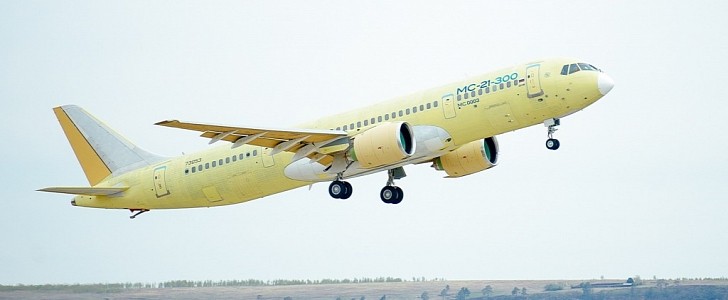It’s no secret that the international sanctions following the invasion of Ukraine have almost led to a collapse of Russia’s air transportation sector. The country’s alleged response is to offer an unprecedented boost to its local aviation industry, in the hope that it can override its previous dependency on the foreign market.
With manufacturers refusing to provide spare parts, leasing companies trying to take back their jets, and a big part of the world denying Russia’s access to its airspace, the country’s commercial aviation was practically frozen. Russia’s reaction is the decision to increase the percentage of domestically-produced aircraft operated by local airlines to over 80%.
According to Reuters, Russian officials announced that a huge investment will support this plan. It seems that the government intends to pump 770 billion rubles (approximately $14.5 billion) in the country’s aviation industry.
The intention to focus on domestically-produced airliners, from start to finish, isn’t new. For years, the country’s aviation industry has been slowly making progress towards mass-produced domestic airliners, with the explicit purpose of loosening the dependency on foreign-made parts. Before the current war broke out, a milestone was hit with the first flight of the MC-21-300.
This medium-haul airliner developed by the Irkut Corporation boasts a unique feature – wings made of innovative composite materials, developed entirely in Russia, in collaboration with the prestigious Moscow State University. Thanks to the use of these domestically-developed composite materials instead of metal, and to the vacuum infusion technology that the Irkut Corporation claims to have patented in the country, the next-gen airplane has lightweight wings, which allow a wider fuselage.
As a result, the MC-21 would boast an extended cabin, and an airframe with a high percentage of composite materials.
At the moment, only the Sukhoi Superjet regional aircraft is mass-produced in Russia, Reuters reports, but most of its parts were imported. The government wants to have 80% of the airlines’ fleets comprised of domestically-produced aircraft, by 2030. But whether it will have the funds and the ability to achieve that is still up for debate.
According to Reuters, Russian officials announced that a huge investment will support this plan. It seems that the government intends to pump 770 billion rubles (approximately $14.5 billion) in the country’s aviation industry.
The intention to focus on domestically-produced airliners, from start to finish, isn’t new. For years, the country’s aviation industry has been slowly making progress towards mass-produced domestic airliners, with the explicit purpose of loosening the dependency on foreign-made parts. Before the current war broke out, a milestone was hit with the first flight of the MC-21-300.
This medium-haul airliner developed by the Irkut Corporation boasts a unique feature – wings made of innovative composite materials, developed entirely in Russia, in collaboration with the prestigious Moscow State University. Thanks to the use of these domestically-developed composite materials instead of metal, and to the vacuum infusion technology that the Irkut Corporation claims to have patented in the country, the next-gen airplane has lightweight wings, which allow a wider fuselage.
As a result, the MC-21 would boast an extended cabin, and an airframe with a high percentage of composite materials.
At the moment, only the Sukhoi Superjet regional aircraft is mass-produced in Russia, Reuters reports, but most of its parts were imported. The government wants to have 80% of the airlines’ fleets comprised of domestically-produced aircraft, by 2030. But whether it will have the funds and the ability to achieve that is still up for debate.







